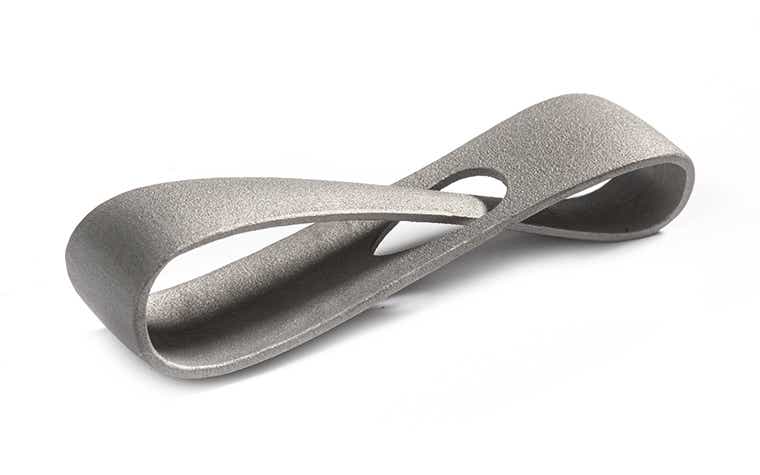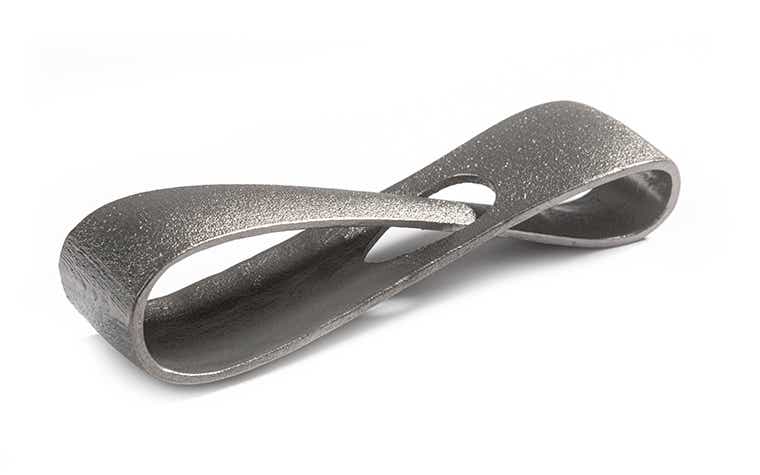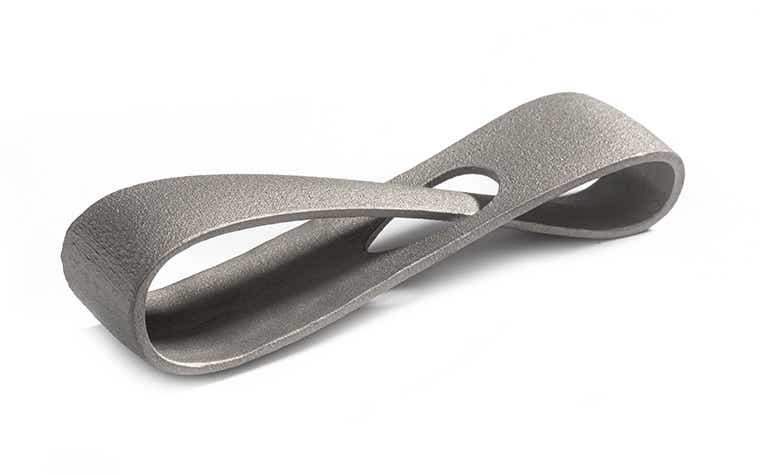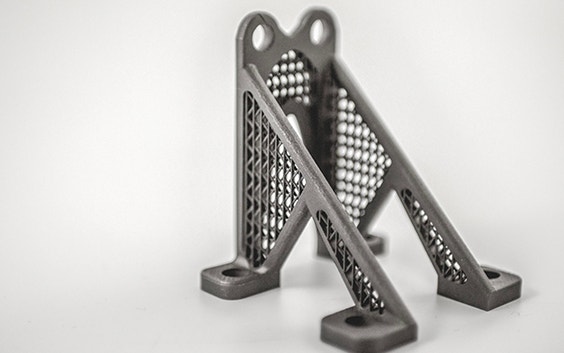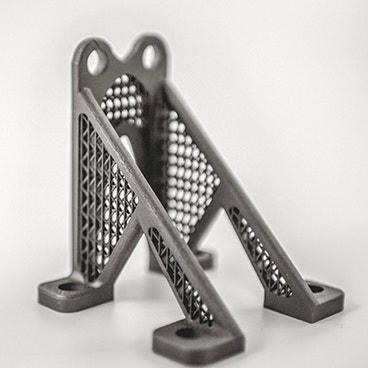Material
Titanium (Ti₆Al₄V)
Ti₆Al₄V is one of the most widely used alloys in metal 3D printing. It offers excellent mechanical strength, high strength-to-weight ratio, and superior corrosion resistance, making it an ideal choice for the aerospace, automotive, and medical industries. This material is highly suitable for functional prototypes, end-use parts, and spare parts.


Technical specifications
| Maximum part dimensions | 250 x 250 x 305 mm 250 x 250 x 275 mm (online orders) |
| Standard accuracy | Better than or equal to the industry standards:
See design guidelines for more information on standard accuracy. |
| Layer thickness | Standard: 0.06 mm, Performance: 0.03 mm |
| Minimum wall thickness | Standard: 1 mm, Performance: 0.5 mm |
| Minimum detail size | 0.4 mm |
| Interlocking or moving parts | No |
| Internal channels | Yes |
| Surface structure | Rough surface |
Grades
Balance performance and efficiency in every project with your choice of Standard or Performance grades.Standard
The all-rounder, where it’s all about technology:
- Ideal for prototypes and simple end-parts
- Form-, fit-, and function-testing
- Strength and density similar to cast parts
- Industry-standard quality requirements
Performance
The specialist, for complex production:
- Ideal for complex metal parts designed for AM
- Preferred for applications in demanding environments
- Suited for series production
- Higher strength and density than casting
- Specialized quality test reports available to your specification
Datasheet
| PARAMETER | STANDARD GRADE | PERFORMANCE GRADE | STANDARD | UNIT | METHOD |
| WGE-Prod-067EN | >4.36 | g/cm³ | |||
| WGE-Prod-067EN | >99 | % | |||
| DIN EN2002-1 | >900* | MPa | |||
| DIN EN2002-1 | >830* | MPa | |||
| DIN EN2002-1 | 110 | GPa | |||
| DIN EN2002-1 | >10* | % | |||
| ISO 4287 / AITM 1-00070 | <20 | µm | |||
| ISO 4287 / AITM 1-00070 | <80 | µm | |||
| ISO 6597-1:03-2006 | >310 | HV |
*Values for tensile specimens according to DIN EN ISO 6892 status as built
Actual values may vary with build conditions.
Strong tensions due to part geometry may distort parts, potentially leading to greater deviation in values. Values for surface roughness depend on the orientation of the surface; downward-facing surfaces and surfaces with support will be rougher.
These values show the material characteristics with additional stress relief heat treatment. Extra heat treatment steps, hot isostatic pressing (HIP), or aging for even higher mechanical properties may be possible, e.g. for serial-produced parts.
Please get in touch with our team for more information.
Finishing degrees
The right finish can transform your print into a product. Explore the post-production finishes we offer for this material. If you have any questions or special requests, get in touch with us.
Train and learn
Get more from your next project with helpful resources dedicated to Titanium (Ti₆Al₄V) and metal 3D printing.
